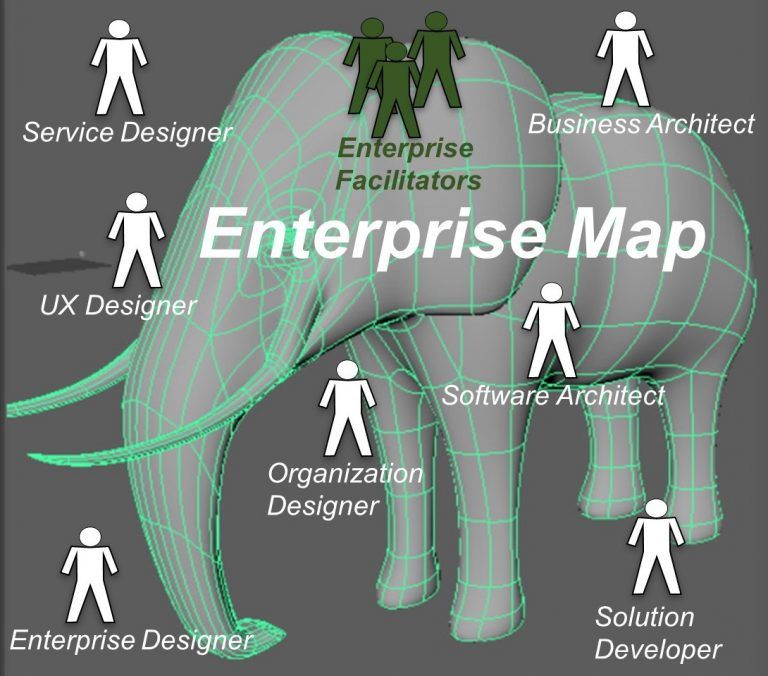Viewpoints of many different disciplines need to be considered in order to implement a holistically designed enterprise. Interests of disciplines closer to purpose and customer value (like service- or UX designers) must be negotiated with disciplines closer to feasibility (like business- or software architects). Designs of those groups can be conflicting, drafts of UX designers, for example, might not be feasible with proper software design or due to limited budgets.
Today those disciplines are having hard times with each other. Designers are often frustrated because their designs are never implemented in the way they envisioned. IT-Architects are frustrated because everybody perceives them as not willing to implement a certain design. Executives are feeling that the money they invest hardly ever leads to the intended outcomes. A lot of misconceptions and conflicts between designers, architects and executives arise that are usually resolved by corporate politics, not the best way to optimize overall enterprise design.

A “Negotiation Space” enables structured, well-facilitated communications between all the stakeholders involved in enterprise design and decision making. This space includes
(i) an “Enterprise Map” as the central depiction of shared meaning everybody can agree on. This map displays “what the enterprise does” to produce its products/services. More specific tools, maps,… (e.g. strategic goals, investments, customer journey map, interfaces to partner, IT-application landscape…) of relevant designing and management disciplines can be linked to this map. It’s a tool that supports that all relevant considerations of involved disciplines are being considered in a balanced way. It provides a leadership instrument for executives that enables informed strategic decisions based on those balance of considerations. In our current discussions, the Enterprise Map is similar to a ->capability map.
(ii) a role “Enterprise Facilitator” that facilitates the negotiation process between all designers and executives. Those people apply strong listening and social skills to influence enterprise design decisions in a way that optimizes the overall value for the enterprise. Enterprise facilitators are curious people. Like a ->gardener passionate about his garden, they must be passionate for the business of their companies. Asking the right questions helps business people to understand their own problems better. Enterprise Facilitators are what Enterprise Architects should always have been.

Did you like this blog post? Never miss an update when we
publish next:
ENTERPRISE DESIGN PATTERNS
Capturing a wealth of experience from many sources, four world-class enterprise designers and architects present a collection of 35 immediately applicable solutions to successful enterprise design.
Buy the book